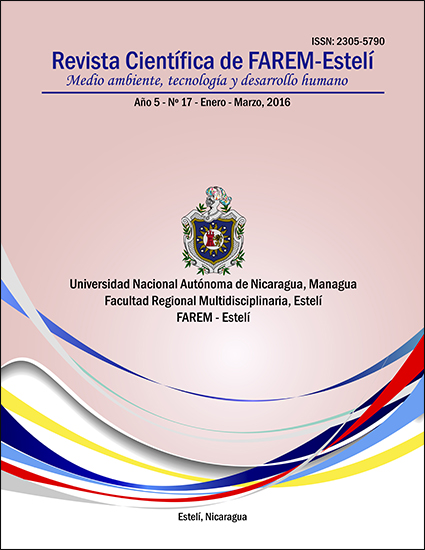Response of the growth and flowering of Tagetes erecta “San Diego” by aggregating atmospheric carbon dioxide fertilization under controlled conditions at the Experimental Station “El Limón”
Abstract
The establishment: ornamental plantings, agricultural crops and forest plantations can be affected by climate changes that leads to a stress of organisms and lower production rates. This paper assesses the benefits of gas known as carbon dioxide used as atmospheric fertilizer use and know their effects on the cultivation of San Diego plant (Tagentes erecta). For the establishment of the research, the facilities of the Experimental Station “El Limón” managed by FAREM -Estelí / UNAN - Managua were used. In assessing the effects of CO2 fertility, Micro tunnels were used, where restrictions of this gas were made. The data measured was: the growth of plant (height and basal diameter), dry matter, robustness and quality index. It was taken as reference the Assessment Quality Index of Dickson (1960). The results showed no difference on height and basal diameter of the plants, the doses which surpass 400 ppm of CO2 increase the dry material of this ornamental crop, and this increases between 6 and 7%. Slenderness rates and quality indicate that plants under 400ppm CO2 are what could best survive in adverse conditions to be established in the field climates.Keywords: Tagetes erecta , carbonic fertilization , dry biomass and plant quality.
Downloads
Download data is not yet available.
Downloads
Published
19-04-2016
How to Cite
Urrutia, J. (2016). Response of the growth and flowering of Tagetes erecta “San Diego” by aggregating atmospheric carbon dioxide fertilization under controlled conditions at the Experimental Station “El Limón”. Revista Científica Estelí, (17), 3–10. Retrieved from https://revistas.unan.edu.ni/index.php/Cientifica/article/view/2926
Issue
Section
ADAPTATION TO CLIMATE CHANGE

